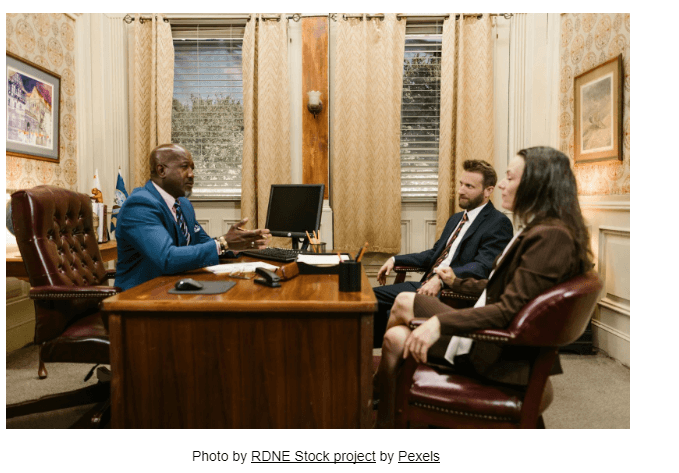Every country, city, or tribe has its own culture, tradition, or vibe. Culture can be best defined as the glue that holds a society together. It provides a sense of identity and belongingness and helps an individual shape their worldview. It helps them define who they are within a larger social context.
Similarly, the corporate world also requires culture to flourish.
What is Corporate Culture?

Corporate culture is a set of distinctive norms, beliefs, and values that set the foundation for an organization’s attitude toward their employees and surroundings. These shared values are often discovered, invented, or developed as a result of closely working in the company.
Corporate culture sets a company apart from others. It defines how an employee perceives and reacts to a problem, a situation, or an opportunity. A well-accomplished corporate culture drives a company’s success or failure. However, corporate culture is more nuanced than this.
Various Types of Corporate Culture
Clan Culture

Clan culture’s values resemble that of a family and rely on loyalty and tradition. This culture promotes high trust and transparency, and great value is attached to personal relationships and morale. The organization attaches great value to teamwork, participation, and consensus.
Hierarchy Culture

Structure and formal rules are the foundational pillars of hierarchy culture. This ensures stability and positive outcomes, through efficient and smooth execution of tasks.
Such a culture works well in the military, where there is a strict chain of command and a well-defined rank system. In a corporate setting, this culture shows a clear structural hierarchy, from the CEO down to the entry-level workers. This structure ensures clear decision-making processes and strict discipline, which are crucial for operations to run smoothly. Personnel management plays a crucial role in ensuring certainty about the job and predictability.
Market Culture

Market culture focuses on using competitive strategies to reach specific measurable objectives, with a focus on winning. Those who embody a dominant market-oriented culture have a strong sense of loyalty toward the organization they work for, even at personal cost. This behavior is connected to the quest for long-term effectiveness and productivity within the organization.
Adhocracy Culture

Adhocracy culture is a workplace where creativity, entrepreneurship, and dynamism are highly valued. Leaders in such organizations tend to be visionary, risk-taking, and focused on experimentation and innovation. This environment fosters a culture of adaptation and innovation, which contributes to high profits and widespread recognition. However, this approach also comes with inherent risks—there is always a chance that a new venture may not succeed and could even damage the organization.
The question arises: Why does corporate culture exist?
According to the U.S. Bureau of Labor Statistics, an average person works for about 53,240 hours in 20 years. Spending that much time in one’s life span can be significant, and it becomes crucial to love the organization they work at, in addition to earning an income. It is reported that, on average, happy employees are 13% more productive, while around one in six people experience mental health problems in the workplace. Having a culture ensures employee satisfaction, comfort, and happiness.
Visible Signs of Corporate Culture
Although each company has its unique culture, certain visible characteristics can be common across industries.
1. Dress Code
A dress code clearly indicates an organization’s culture. A casual dress code employed by Google, for example, reflects the company’s relaxed and innovative culture, while a business casual dress code at Microsoft reflects professionalism while allowing for some level of comfort and flexibility.
Goldman Sachs is an investment banking company that follows a formal dress code, which reflects the company’s emphasis on professionalism and traditional values. On the other hand, hospitality industries enforce a uniform dress code to symbolize consistency across establishments, and to reinforce brand image and a sense of belongingness.
2. Snack Areas

Free snacks indicate a culture that values employee well-being and social interaction. Airbnb’s offices usually feature a wide selection of snacks, drinks, and even occasional treats from local vendors. Similarly, Hewlett Packard Enterprise has an app where employees can get one free treat per day. These treats and snacks keep employees rejuvenated and excited to work.
3. Rewards and Recognition
Celebrating employees’ achievements highlights a company’s values and what it rewards. This can be done in various ways, like the most common reward, “Employee of the Month,” which is recognized by companies around the globe.
Microsoft has an internal recognition platform called “You Make a Difference,” where employees can give each other virtual high-fives, send thank-you notes, and nominate peers for recognition. IBM celebrates employee milestones with longevity awards, recognizing employees for their years of service to the company.
4. Mission Statement
A mission statement serves as a reminder to employees of why they are there and what their goals and attitudes should be. It reflects the company’s core values and goals.
For example, Patagonia’s mission statement is “Build the best product, cause no unnecessary harm, use business to inspire and implement solutions to the environmental crisis.” Tesla’s mission statement is, “To accelerate the world’s transition to sustainable energy.”
5. Events and Rituals

Customs or rituals, such as birthday celebrations, “Dress Down Tuesday,” or recognition walls, help to reinforce a company’s values and norms.
Netflix offers culture workshops for new employees to learn about the company’s values, norms, and expectations. Amazon organizes quarterly team-building retreats to encourage teamwork and collaboration; employees from different teams and departments come together for outdoor activities, workshops, and bonding experiences.
6. Physical Layout and Decor
Meta (formerly Facebook) offices often feature open floor plans with collaborative workspaces, communal areas, and glass-walled meeting rooms to foster transparency, communication, and collaboration among employees. Etsy’s offices showcase vibrant and eclectic wall art, including handmade crafts, prints, and murals to reflect the company’s culture of creativity, individuality, and support for independent artisans and makers. In contrast, Apple’s offices are known for their minimalist design aesthetic to reflect the company’s culture of simplicity, focus, and attention to detail.
What influences the formation of corporate culture?
- Founders
Whenever a company is founded, the founder or founders define its vision and mission. These statements then serve as the foundation of the company’s future culture.
For example, if a young founder establishes an educational institution, then their vision could be centered around empowerment and knowledge. As the company grows, it may foster a clan culture characterized by high levels of trust, transparency, and a strong emphasis on personal relationships and morale. Alternatively, it could embrace an adhocracy culture, valuing creativity, entrepreneurship, and dynamism.
- Industry
In addition to the vision and mission of the founder or founders, the industry in which a company operates shapes its culture. For instance, industries like military operations or law firms require a hierarchical culture for effective functioning, whereas an audiobook company thrives in an adhocracy or market culture rather than a hierarchical structure.
Why is Corporate Culture Important?
1. Directly Proportionate to Success
Companies with best-in-class cultures are 72% more likely to invest in training for leaders compared to all others. This gives rise to innovative leaders and entrepreneurs who present the stepping stone to success.
2. Increased Team Performance

As the saying goes, “Shoulder to shoulder, we march forward.” Companies with a strong corporate culture see a fourfold increase in revenue growth compared to companies with a weak culture. Teams with a strong sense of shared purpose and values have a 17% increase in performance compared to teams without a strong sense of purpose and values.
3. Employee Engagement and Retention
Toxic culture is 10 times more likely to cause turnover than compensation, proving that employee satisfaction is an extremely important yet mostly overlooked factor. Shockingly, at least 50% of the U.S. workforce is “quiet quitting,” which means they are disengaged from their jobs but have not yet resigned. This leads to worldwide company losses of up to $1.5 trillion each year.
Thus, companies that prioritize employee satisfaction and create a positive work environment for their employees reduce turnover and boost productivity.
Conclusion
Having a strong corporate culture can do wonders for employee engagement, retention, and productivity. On the other hand, a weak or toxic culture can have the opposite effect. And leaders play a critical role in shaping the company culture.
It’s safe to say that the success of a company often hinges on the values and beliefs of its leadership. Companies that prioritize diversity, equity, and inclusion are more likely to thrive in today’s increasingly global and interconnected world.
So, if you’re looking to build a company that truly stands out, it’s essential to prioritize your corporate culture and make it a top priority. After all, corporate culture is all about “thinking outside the cubicle.”
